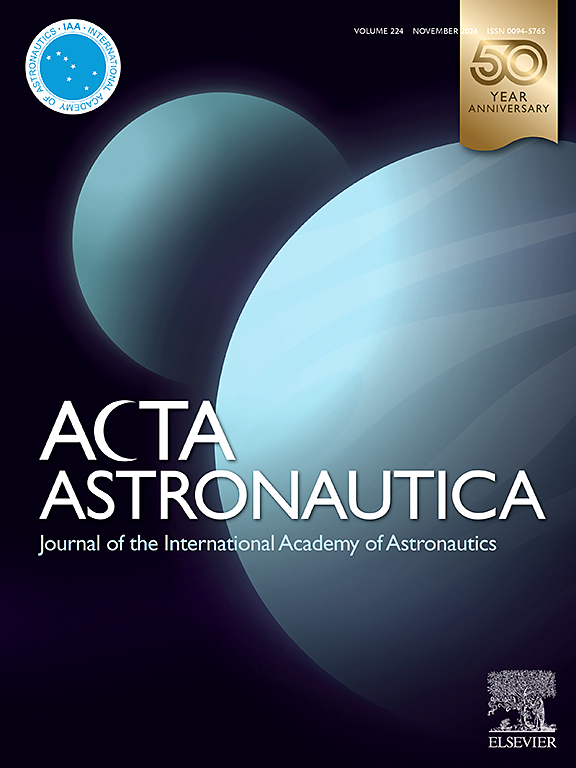Preliminary design and performance assessment of a semi-autonomous global navigation satellite system on Mars
IF 3.1
2区 物理与天体物理
Q1 ENGINEERING, AEROSPACE
引用次数: 0
Abstract
Over the last decades, several space agencies have increased their efforts in the design of future missions to Mars. To assist the operations of the upcoming missions, an infrastructure to support their navigation needs would be highly beneficial. In this scenario, we propose a configuration for a Martian navigation satellite system which ensures continuous and global positioning and timing services to users located everywhere on the planet and its vicinities, such as orbiters, rovers, and landers. We outline the constellation selection process and identify a suitable configuration of the system. The novel aspect of the proposed architecture consists in the use of intersatellite links between the constellation nodes, able to provide extremely accurate Doppler measurements and good positional accuracy in the known gravity field of the planet. Thanks to the intersatellite links, the need for ground support from Earth can be strongly reduced. To assess the performance of this configuration, a simulation of the orbit determination process of the constellation nodes is performed. Our results suggest that satellites can be positioned with respect to Mars with an accuracy at the level of 15 m with limited support from Earth. Finally, we evaluate the positioning performance of the end users located on the Martian surface. We show that a positioning accuracy as low as 20 m can be achieved (1-σ, 90 % of the time) with the proposed constellation.
求助全文
约1分钟内获得全文
求助全文
来源期刊

Acta Astronautica
工程技术-工程:宇航
CiteScore
7.20
自引率
22.90%
发文量
599
审稿时长
53 days
期刊介绍:
Acta Astronautica is sponsored by the International Academy of Astronautics. Content is based on original contributions in all fields of basic, engineering, life and social space sciences and of space technology related to:
The peaceful scientific exploration of space,
Its exploitation for human welfare and progress,
Conception, design, development and operation of space-borne and Earth-based systems,
In addition to regular issues, the journal publishes selected proceedings of the annual International Astronautical Congress (IAC), transactions of the IAA and special issues on topics of current interest, such as microgravity, space station technology, geostationary orbits, and space economics. Other subject areas include satellite technology, space transportation and communications, space energy, power and propulsion, astrodynamics, extraterrestrial intelligence and Earth observations.
 求助内容:
求助内容: 应助结果提醒方式:
应助结果提醒方式:


